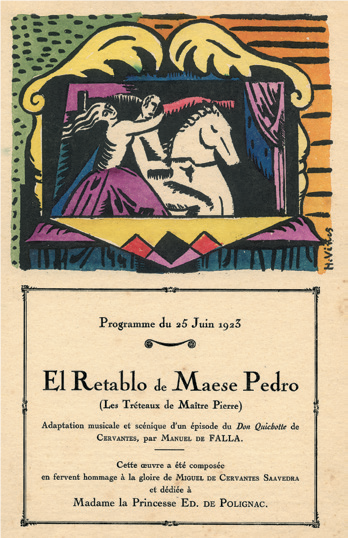

Programa del estreno en París, 1923. Archivo Manuel de Falla, Granada. © Hernando Viñes, VEGAP, Madrid, 2023.
El retablo de maese Pedro was performed for the first time on 25 June 1923 in the music room of the Princesse de Polignac, an American-born lady whose father had perfected the Singer sewing machine and who invested a large part of her fortune in sponsoring avant-garde mu-sical creations.
The premiere was attended by luminaries of European art and literary circles, members of Parisian high society, and several Spanish composers, who hailed the work as a genuine revela-tion. Many years later, Joaquín Rodrigo said of the experience, “Spanish tradition, true tradition, spread out before me, filled with promises and possibilities”.
The work was staged with the help of Hermenegildo Lanz (who made the heads and hands of the puppets representing real people at the inn and the scenery for the second act), Manuel Ángeles Ortiz (in charge of the portable stage’s front and curtain, as well as other sets and figures for Master Peter’s puppet show) and Hernando Viñes (who handled the rest of the scenery and puppet-show figures).
